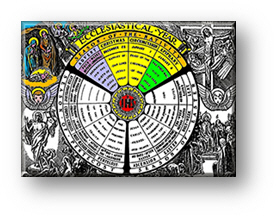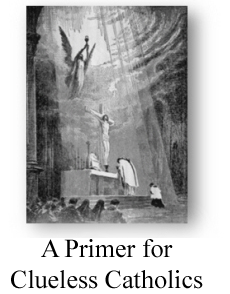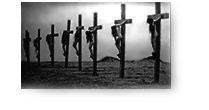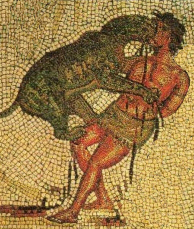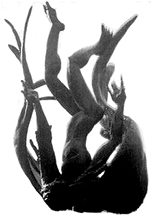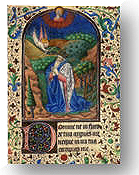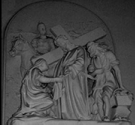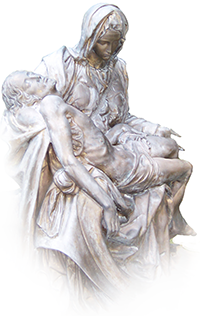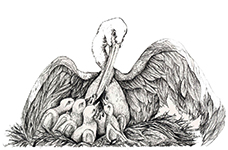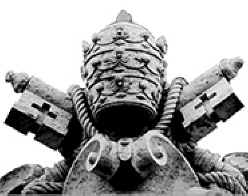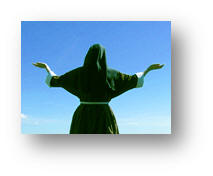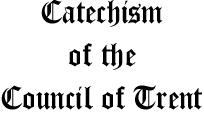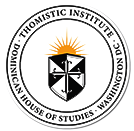|
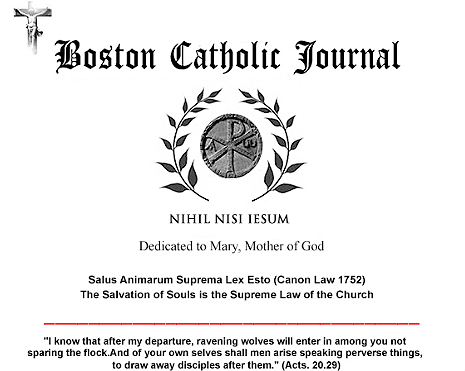
Personal Sanctity …
all that is left in a World without God
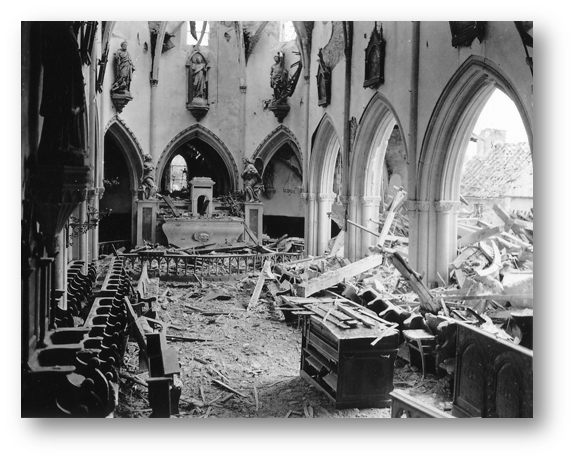
“I
pray not for the world, but for them whom Thou hast given Me”
(St. John 17:9)
The corruption
— on every conceivable level — of the world and in
the world (and most pernicious of all, within the Church
Herself: her cardinals, her bishops, her priests, her “modern sisters”
and “nuns” … even her present papacy!) — and especially in the West (often,
and accurately, referred to as the “Post-Christian world”) — is
nothing less than staggering. In the last 60 years (unquestionably
since the confluence of that socio-theological miasma called Vatican
II) we have encountered unprecedented levels of what can only be
called malignant decadence — spiritual, moral, and social. It takes
one’s breath away.
We have lost God
More accurately, we have abandoned
God in favor of ourselves — and as a consequence, we have lost not
only ourselves, but our very identity, often painfully acquired
over the last 2000 years. We no longer recognize who we are
and what we are.
“Progress” and “the perverse” have become
synonymous
We have become — for all the wrong reasons
— self-loathing: detesting ourselves and the patrimony of a Catholic
culture through which our very identity both as individuals and
nations had been articulated.
Many hate the Church and a significant
element within the Church hates the Church, remaining
within Her as a cancer in its host. Western Christian culture is
repudiated, ridiculed, and contemned as anachronistic, imperialistic,
homophobic, racist, and misogynistic.
Repudiating the true God as inimical
to our passions and perversions, we have made our own gods, and
they are many — in fact, as many as we are ourselves. Women are
taught — indoctrinated really — to hate men and everything they
deem “patriarchal.”
Everything that pertains to our loins, or more accurately,
the loins of others — especially of the same gender — has supplanted,
displaced, and superseded the numinous, anything authentically divine,
and most especially, the holy. The very terms have been relegated
to the periphery of polite discourse, when not entirely expurgated
from it.
The world has fled God into the illusion
of a utopian garden that is a desiccated dessert. It is populated
by fictions and the rim of the horizon of our desires is the pretension
that there is an end called satisfaction instead of an endlessly
recursive vanishing point.
We find few paradigms of holiness in this
City of Man — sadly, not even among many of our priests, and, more
tragically still, even fewer among our bishops. To what, then, shall
we strive to attain in this increasingly lonely place we call life
without Christ? What vision are we presented, and to what end are
we called?
Mother Teresa, in an interview some years
ago, explained the obvious. Rational persuasion, logical coherence,
even the most impassioned homily will not bring a person to conversion,
to Christ, and therefore to the Church. One thing only is capable
of this monumental task: example; the example of holiness
that we encounter in others that becomes the impetus to emulation:
we want to be like them. And they are like Christ.
We are sadly lacking in example
as Catholics. How often do we feel compelled to say to ourselves,
“I want to be like her, like him!” when we observe an act, some
instance, of holiness that overwhelms us in its simplicity? What
examples, what paradigms, do we confront in our lives in Christ
that compel us to
holiness? We must not confuse
the exemplary with the popular, nor must we confuse
it with carefully orchestrated events intended to inspire us. The
exemplary is unrehearsed and has no concomitant agendum that is
concealed within it. It is utterly spontaneous! And therefore,
we sense, utterly genuine.
The
Leaven of the World
What historical figures in our lives as Catholics
attain to this extraordinary state of the exemplary that
motivates men and women to imitation? To what are we exposed
that motivates us not to the common and ordinary, but to the uncommon
and exemplary? What do we see before us that calls us beyond ourselves
and beyond the gray and geometric sterility of the world to what
lies beyond it?
In a word, where is the differentiation between
the Church and the world, the common and the extraordinary, the
profane and the sacred? Let us be truthful and acknowledge the obvious:
the world has permeated the Church to such an extent that we can
no longer coherently differentiate the two except upon the most
tenuous of distinctions. Increasingly the agenda of the Church
is the agenda of the world. This is not the leaven
Christ spoke of. It is the leaven of the world; the leaven of infinitely
deep and unimaginably hostile places that we pretend do not exist.
Personal Sanctity
First, let us understand this with complete clarity:
we cannot attain to sanctity apart from the Church
and Her Sacraments. We cannot become holy schismatics, that is to
say, apart from the Church which is the Body of Christ.
However sterile we have found it since the spurious and self-promoting
euphoria of Vatican II … however trampled the Vineyard and however
littered with discarded and never-to-be-revised Roman Missals, Religious
habits, Chapel Veils, Priestly collars, Roman Cassocks, kneelers
… even the centrality of the Eucharistic Presence of Christ, and
an understanding of the Mass as a Sacrifice; however grotesquely
crippled and contorted the buildings we call our “Churches”
have become — more redolent of civic auditoriums than Sanctuaries,
there … there … abides the Living God, hidden in Tabernacles
we often do not see and only find with much difficulty. He
is there! However much we shunt Him aside as both an ecumenical
and chronological embarrassment, all the litter of what has been
discarded cannot conceal Him from us. He beckons us, and even under
the most humiliating circumstances, we can look upon Him Who ever
looks upon us.
Apart from the Church, the Most
Blessed Sacrament of the Altar, and the Most Holy Sacrifice
of the Mass … we can do nothing, become nothing, worthy of the
Most Precious Blood poured out for us upon that Altar. To be
holy we must be part of the Church
for the Church, as
we have said, is the Body of Christ, and He Who is the Head of the
Body is God Himself. Christ Jesus. God Alone is Holy — and
it is He Who participates His holiness to us that we may be,
in the most clear way possible, what we were created to be; what
we essentially are, despite the filth of sin that
covers it, obscures it, and defaces it: the imago Dei, the
image of God Himself!
In this wasteland barren of spires and empty of cloisters, ugly,
squat, geometric and concrete, Bauhaus pretensions emerged from
the rubble of “clustered” demolished
churches (Churches without anyone left to worship in them
—
one of the many “successes” of Vatican
II). They are no longer grand structures
striving to equal the soaring Faith of men and women in heights
contiguous to Heaven itself … but stooped, square, economical structures
that could as well be mortuaries (or athletic facilities, commercial
structures, municipal offices
—
“functional” things that could, in an instant, reflexively duplicate
any of the above in need.
“Faith
Communities?”
Indeed, we no longer have “churches” as such
—
but
in some paroxysm of needless novelty we now have “Faith Communities”
—
only
parenthetically “Catholic” lest they offend broad ecumenical sensitivities,
for are there not other “Faith Communities” distinct from,
if often antithetical, even inimical, to the Catholic Faith? By
a “Church” we immediately understand something quite different from
a “Mosque”, a “Synagogue”, a “Temple”, or a “Kingdom Hall”. Understood
as a “Faith Community,” a Catholic Church is no different
from any of these. In an age of unbridled ecumenism are they
any less “Faith Communities” than our own, we implicitly, even necessarily
ask, not just minimizing but marginalizing the unique mission and
commission of the Church established by Christ upon Saint Peter?
If they were established by Muhammed, or Lao Tzu, or Martin Luther,
are not such “Faith Communities” equally acceptable to God in the
sweeping logic of ecumenism?
If indeed they are, then the crucifixion of Christ
on the Cross is emptied of all value and meaning. He died for no
reason if every “Faith Community” is the way to salvation. His death
was not necessary in the economy of salvation: hence He died needlessly
... even gratuitously. This, of course, is a scandal to the very
Gospel He Himself proclaimed.
“I am the way, and the truth, and the life. No man cometh to the
Father, but by Me.”
12 But in the malformed logic of ecumenism, even if other
“Faith Communities” despise the Triune God of Catholics and hold
to other gods, are they not equal expressions of man’s faith
and legitimate venues of salvation? In the “correct” atmosphere
of post-Vatican II theology, would we dare to assert that they are
not? “All roads lead to Rome” … that lead away from Rome
— and every paradigm of the holy, however contradictory, is deemed
legitimate and authentic, and the end of each is the same: Heaven
and salvation. Saint, heretic, infidel, and atheist alike go to
God. The Catholic Church has no corner on salvation. She is now
simply one among many, and Christ erred in proclaiming Himself,
“the way, and the truth, and the life,”
and
deceived us in insisting that,
“No man cometh to the Father, but by Me.”
“Spreading our Tent Pegs ...”?
We are so damnably democratic … We must “spread
our tent pegs,” we are told, to be inclusive of all — even
if God is not. The strange thing, however, about “spreading
our tent pegs” is that the wider, the more inclusive, the more “horizontal”,
they become, the lower the apex of the tent. We achieve the horizontal
at the expense of the vertical. We sacrifice the magnificent height
to accommodate the factious width. Ask any camper. Even happy ones.
Eventually the fabric rips and the structure collapses. Most often
in the rain. And in great ruin. The “stitching” did not, could not,
hold this multiplicity of opposing forces however benevolent or
brainless our intentions.
Accompanying this ecumenical impulse was, necessarily,
theological ambiguity. How, otherwise, hope to bring hoped-for consensus
out of conflicting doctrines? It is this ambiguity that afflicts
ambo and podium alike in nominally Catholic institutions. In matters
of Faith, morals, and doctrine, it is rather like equivocating on
geometric postulates or axioms; or in mathematics holding in abeyance
quantitative relationships that are otherwise held to necessarily
obtain between integers.
Much like Dostoyevsky we reach a point
where we declare,
“To me that 2+2=4 is sheer insolence.
I admit that twice two makes four is an excellent thing, but if
we are to give everything its due, twice two makes five is sometimes
a very charming thing too.” (Notes from Underground)
This is largely the state of Catholic
theology, and, eo ipso, Catholic homiletics. We are no longer
—
I repeat: no longer (for once, and for
a very long time we were … prior to Vatican II)
—
certain of just what Holy Mother the Church teaches, given this
priest or that theologian and whether it was Wednesday or Thursday.
“Officially” She teaches “this”, but depending on the audience She
—
or better yet, and to be fair, Her spokesman in the person
of a priest, nun, sister, bishop, pope, or theologian
—
proposes, or at least appears to suggest the contrary
—
or openly rebels against it! For the average Catholic layman or
laywoman, they: the bishop, the priest, the Religious, are the consecrated
symbols of utter fidelity to the Church, and for that reason it
is a scandalous state of affairs.
How
then do we live our lives as Catholics — not post-Catholics
in a post-Christian world?
How do we live our Catholic lives as they had been
fervently lived for 2000 years prior to the insipid, diffident,
confused and eclectic — and at times even implicitly pantheistic
— impulses and subsequent teachings that emerged from Vatican II,
an unnecessary Council which effectively and efficiently tore down
the edifice of Catholicism as distinct, distinguishable, and unique?
As a way of life? In other words, lacking visible paradigms
of sanctity, how do we go about living lives of holiness amid the
detritus of so much we once considered sacred and that now litters
the ecclesiastical landscape of the Modern Church or the
American Church or the European Church — all of which
are to be conflated into one ecclesiastical body that appears to
articulate itself as distinct from the Roman Catholic
Church? In practical terms, it is an increasingly autonomous
body. We see this most strikingly today in Germany.
Shall we go more frequently to Mass?
This is an obvious paradigm from another and past
generation. It once was true, but if we are remorselessly
candid, it is no longer so. How often do we go to Mass and
leave no more enlightened or fervid than when we had entered? Much
of what was distinctively and historically Catholic is no longer
there. “God loves you. The weather is great. You are all going to
Heaven (and your dog, too). Be nice. Shalom. Go in peace.” If we
are honest we cannot leave fast enough.
How about the Sacrament of Penance — Confession
... now called the Rite of Reconciliation practiced
face to face in a room with well-appointed and comfortable chairs
strangely reminiscent of a psychotherapist’s office? The bulletin
indicates that it is only available 45 minutes per week
or “by appointment” … as with a “therapist”. Frankly, this is not
much of an option, especially since the evisceration of the concept
of Mortal Sin (a term no longer in use because no longer applicable)
and the paucity of “real” sinners like you and me.
What about a Spiritual Director?
Good luck finding one at all, let alone one who
knows and will give you the mind of the Church — rather
than currently prevailing spiritual trends. Once again, we effectively
encounter,
“God loves you. The weather is great. You are
going to Heaven (and your dog, too). Be nice. Shalom. Go in
peace.”
Perhaps we Should Go to Medjugorje to
listen to the “Seers” of the “Gospa”?
The “Seers,”
beginning June 24, 1981
— youngsters then, adults now, some 34 years later — surely have
an answer somewhere in the thousands of appearances of the
“Gospa” (Mary).
1
Make expensive travel arrangements through them to visit Medjugorje
(including hotels, meals, and even meeting with one of the “Seers”
themselves) and watch your rosary turn into gold! You will hear
much of the pronouncements of Vatican II validated by the Mother
of God Herself, such as:
“Before God all the faiths are identical. God governs
them like a king in his kingdom.” All sufferings are equal in hell;
and Mirjana quotes the Gospa as telling her that people begin feeling
comfortable in hell. … When the Madonna is asked about the title,
“Mediatrix of all graces,” she replies, “I do not dispose of all
graces.”
2
Perhaps the “Gospa” will reveal the way of holiness to you, although
her track record over the past three decades (and thousands
of “appearances”) has been uniformly dismal in the way of predictions
and has led to open schism with the local bishop who insists (with
the Church) that the “Gospa” and her six now-middle-age confederates
are not authentic (yes, despite the organized parish visits,
in direct disobedience to the Church, with your local
priest you can make a “pilgrimage” to a site condemned as spurious
by Rome.)
What then? What is Left?
Personal Sanctity.
Apart
from any organized approach to holiness though the Mass (and
the incredibly bad music that is a perpetual distraction from it),
or Confession (barely extant), or sound Spiritual Direction (almost
universally absent) there is one venue, and one alone that is open
to you in these sterile, confused, contradictory, and tepid times
in which the Church appears as clear and distinct as a Microsoft
hologram: the commitment to personal sanctity guided by the Lives
of the Saints, rather than disaffected theologians.
“You are surrounded
by a Cloud of Witnesses”,
we are told
3
who
have gone before you and have arrived at genuine sanctity, at complete
and indissoluble union with God in Heaven. Let them — by
their words and by their example — be our teachers
who had taught and guided the Church for two millennia.
Personal Sanctity requires effort. You must come to
know the mind of the Church and authentic Catholic doctrine
and dogma. That is to say, you must be catechized. “But I
went to CCD!” you protest. “And what did you learn?” I will ask.
“Why did God create you?” And you will have no answer. In a word,
you learned nothing despite the expensive, glossy textbooks your
parents had to pay for, and which were far, far, more pictorial
than substantial. They were … trendy. Empty. Worthless. And even
back then, you knew it. Indeed, your CCD teacher knew
as much about the Faith as you did. Catechesis has not been an important
agendum to your local bishop; even while it should be the most
preeminent as that upon which all things subsequent depend.
Immerse yourself in authentic Catholic doctrine —
and assiduously avoid anything , even with (or without) an Imprimatur
and/or Nihil Obstat that post-dates 1950.The
Imprimatur and/or Nihil Obstat are no longer any guarantee
that what you read is consistent with the mind and historical teachings
of the Church. Once they were legitimate stamps of approval as consistent
with the Magisterium of the Church, but they have long ceased to
be so. Open the first few pages of any ostensibly Catholic book
and look for the date of the first printing. This will tell you
much in the way of their authenticity and reliability as instruments
appropriate for the formation of a Catholic Conscience. If it has
been printed following 1950, politely put it down despite the rave
reviews of any nominally Catholic source, to say nothing of any
secular source.
In a famous line from the movie “The Exorcist” (based
on fact) by William Peter Blatty, the elderly Father Merrin warns
the much younger Father Karras who is suffering a crisis of Faith
that, “He is a liar, the demon is a liar. He will lie
to confuse us. But he will also mix lies with the truth to attack
us. The attack is psychological, Damien. And powerful. So don't
listen, remember that, do not listen.”
By and large, Catholic literature dealing with matters
of Faith, Morals, Doctrine, and Dogma — either as pamphlets or scholarly
tomes had, prior to 1950, been carefully vetted by competent Catholic
theologians, priests, or bishops. They are credible sources and
remain so, although many have fallen out of print — not from desuetude
but as inconsistent with present and “popular” Catholic thought,
often percolated through Rogerian psychology.
The famous library at Alexandria
4 in classical antiquity was burned by the Muslims
in 642 in an effort to destroy any book incompatible with the Quran.”
Modern” Catholic theology and literature has engaged in a similar
enterprise. Many of the greatest books in Catholic literature are
now only available on-line or through small publishing houses committed
to preserving genuine Catholic teaching.
Apart from this treasury of 2000 years of Catholic
teaching we are left with incomplete, contradictory, and confusing
doctrines, not of the Church, but of dissident and disaffected theologians,
priests, and would-be “priestesses” who, in today's “inclusive”
seminaries are the instructors of what few candidates to the priesthood
we have left following their decimation by homosexual clerics. Richard
McBrien, Daniel Maguire, Hans Kung, Schillebeeckx, Congar, Rahner,
and Teilhard de Chardin — all voluble and nominally Catholic theologians
— three were collarless priests — are among the most eminent examples
of this theological dissidence, confusion, fiction, and heresy.
In their writings we are presented with a mixture of some truth
(to entice us) and many lies (to confuse us) reminiscent of the
stratagems of the demon in Blatty’s, The Exorcist. Where
is a Catholic to go to re-acquire an authentic Catholic identity
consistent with the Church and the Saints for 2000 years?
Grayscale Memories
Many of us have them. We cleave to them as to invaluable
possessions, for they introduced us to an awareness of the holy
and of places other than Earth; to a belief in things more profound
than venal democratic institutions and more enduring than perverse
social issues. They opened the vista to things eternal and resplendent
in glory, to things holy that the world could not possibly sully
and debase because of the ontological distance that separated them,
a distance as great as sanctity from sin. They are in carefully
kept albums from a time of innocence, and inscribed in the Family
Bible placed beside a statue of Mary the Mother of God. They are
indelibly impressed in our memories; our First Holy Communions,
May Processions, the Baptisms of our children, and on the memorial
cards of those we love and who now live, please God, in a place
called Paradise, forever beyond this jaded Earth.
So How Do We Get Back?
A soul at a time, beginning with our own.
Let us look at a few fundamental concepts with which
we ought to familiarize ourselves if we are committed to persevering
toward Personal Sanctity. Once we have acquired these, we have the
tools through which to articulate our own lives, whatever our vocation
in life, to accord with the mind of Christ and the mind of the Church
in matters dealing with the Faith, the Faith that has been faithfully
transmitted to us through the Deposit of Faith, for what we are
striving toward is nothing less than Exemplary Holiness
which itself is nothing more than Personal Sanctity.
·
Devotion to Jesus Christ in the Most Blessed Sacrament of the
Altar
We recognize
that He is there, really and truly, in His
Body, Blood, Soul, and Divinity. This the character of exemplary
Catholicism: the recognition of God Himself in the Second Person
of the Most Holy Trinity really and truly present to us in the Tabernacle.
Without His Presence, without Him, the building we call a Church
is nothing but a meaningless and empty edifice. He is there!
And He awaits you. Anytime of the day or night. For the most part
He is left alone and unrecognized. We do not kneel before Him, but
have the hubris to stand as before an equal! Is that how you will
approach Him in the Last Judgment? We do not have the humility to
genuflect when we pass before Him, acknowledging Him … and yet we
would not dare pass a mere man we know without greeting him with
some gesture of recognition …
·
Frequent, but Discerning (worthy) Reception of Holy Communion:
You
are familiar with the spectacle of everyone going to Holy
Communion as though there were no sinners in the pews. This
indiscriminate partaking of the Bread of Angels with no
Examination of Conscience prior to approaching Christ in
Holy Communion is itself a Mortal Sin if one is aware of an unconfessed
Mortal sinned that has not been absolved in the Tribunal of Penance
(Holy Confession). In the state of Mortal Sin and not sufficiently
cognizant of the true and real Presence of Christ in the sacred
species of Holy Communion, it is an act of blasphemy and therefore
the death of the soul in conspectu Dei (in the sight of God),
for Saint Paul is very clear:
“For he that eateth
and drinketh unworthily, eateth and drinketh judgment to himself,
not discerning the body of the Lord.”
5
Most
often, apart from ignorance, the source of this sin is the Capital
Sin of Pride which refuses to constrain us to conspicuously
remain in the pews in recognition of our unworthiness, through
Mortal Sin, to receive Holy Communion — when everyone else is. Even
if Pope Francis in his Joy of Love (Amoris Laetitia)
deems it acceptable in second, third, or fourth … “unions” …
of those “living in God’s grace,” … adultery notwithstanding.
·
Recognition of the real Distinction between Venial Sins and
Mortal Sins:
This
is not the venue of a discussion of the distinction between Mortal
and Venial Sin. Suffice it to say that a Mortal Sin
must contain all three of the following: (1) the matter of
the sin must be serious, (2) one wills to commit the sin,
and (3) one commits the Mortal Sin. A Venial Sin is not serious
in nature, is committed without a full understanding of the detrimental
nature of the sin, and/or is not committed with the total consent
of the will. Venial sins do not preclude participation in Holy Communion.
Mortal Sins do.
·
Devotion to Mary:
One
preeminent hallmark of Catholic piety is the love of Mary, Mother
of God. Devotion to Mary is the sine qua non of the fully
lived Catholic life. Her place in the economy of salvation is absolutely
singular: she alone gave flesh (her flesh) to the Word Incarnate.
Hence
“every generation shall call me blessed”
6
She
is our Mother.7
·
Recognition of the Reality of Heaven and Hell
It is
the Sin of Presumption to assume that, as a matter
of course, we will go to Heaven and stand before the Beatific Vision
of God eternally. Even Saint Paul exhorted us to work out our salvation
“with fear and trembling.”
8
Despite
the total absence and silence at the ambo of any mention of Hell,
it is quite real and many go there.
9
·
The Four Final Things: Death, Judgment, Heaven
or Hell
In many
old graveyards you will find the following inscribed upon many humble
markers: “Sum quod eris, fui quod sis” — essentially, “As
you are I once was, as I am you will one day be.” Understand
your mortality, recognize the inevitable, and act accordingly. Remember
the distinction between “life” and “life everlasting” … however
it will be lived … in Heaven or Hell. Have always before you
the Last Four Things that will surely come to pass instead of
the present “popular” things in vogue with a Church that has become
heavily feminized in every aspect of its “Liturgy” and social
teachings.
·
Never Pass a Church without recognizing Christ within:
“Gloria
tibi, Domine!” (Glory to You, Lord!), or “Laus tibi,
Domine” (Praise to You, Lord!). A devout Catholic always makes
some sign of recognition of Christ in the Most Holy Sacrament of
the Altar when he passes a Church. This is accompanied by tracing
the Sign of the Cross on our forehead or over our heart. When this
becomes instinctual (as it had been prior to Vatican II) it will
assist us in recognizing Who abides there and for what reason. It
is the instinctive call to holiness.
·
Receive Holy Communion on your Knees
Remarkably,
this is no longer the norm in modern Novus Ordo masses. Saint
Francis himself, it is said, refused Holy Orders (becoming a priest)
because he did not think himself worthy to hold the Sacred
Body of Christ in his hands. You may be reproached
by the priest in your parish for not following the “approved posture”
adopted by the diocese or the USCCB. As Saint Peter responded to
those who discouraged his preaching the Gospel,
“Is it
better to obey God, or men?”
10
For 2000 years Holy Communion was received this way, and nowhere
in the documents of Vatican II does it suggest otherwise. Would
you approach Christ in less an attitude of humility and adoration?
Do not fear being scorned for what others may ridicule as your
“sanctimony”. It is Christ Himself you kneel before! What
thought of anyone else should occupy your mind?
For God’s sake get on your knees!
·
Honor the Saints and Martyrs
They,
not your “Parish Council” are your faithful and eternal friends.
If they are no longer honored in the present Martyrology, honor
them still, and invoke their aid and protection. Remain in their
company, who behold the face of God in Heaven. It is the Company
to which you are called!
Christ Himself promised us that the very Gates of
Hell will not prevail against the Church. And yes, the Church, as
we limply excuse ourselves, is “made up of sinners.”
But it is
also made up of saints. That is our universal vocation:
to be nothing less than saints, whatever our earthly vocation. But
we are not saints yet. As Saint Francis famously said, “Let us
begin. For up to now we have done nothing.” Do not be afraid
of sanctity. It is the very character of the image in which you
have been created.
Whatever the Church now suffers on earth it has suffered
before — if not on so vast a scale
And that is precisely why your call
to sanctity is so vital. You must pursue the sanctity that
the Church at present appears to have lost, or spurns as too onerous
… too “otherworldly” in this “Age of Man”. You must be the
sign of contradiction that is the Sign of the Cross, and Him Who
was crucified upon it for you. You must be in the world but not
of the world, for Saint John warns us,
“Love
not the world, nor the things which are in the world.
If any man love the world, the charity of the Father
is not in him. For all that is in the world is the concupiscence
of the flesh, and the concupiscence of the eyes, and the pride of
life, which is not of the Father, but is of the world. And the world
passes away, and the concupiscence thereof: but he that doth the
will of God, abides forever.”
11
Spurn the world — and the empty love and praise of
the world! Keep all that is holy before you and this day
begin to dwell already in the Mansion prepared for you by Christ
before the foundation of the world.
Editor
Boston Catholic Journal
 Printable
PDF Version
Printable
PDF Version
Comments? Write us:
editor@boston-catholic-journal.com
_______________________________
1
See
https://www.boston-catholic-journal.com/medjugorje-private-revelation-and-the-seer-ing-truth.htm,
2
https://www.crisismagazine.com/2012/the-devil-and-medjugorje
3
Hebrews 12.1
4 “In AD 642, Alexandria
was captured by the Muslim army of Amr ibn al `Aas. Several later
Arabic sources describe the library's destruction by the order of
Caliph Omar. Bar-Hebraeus, writing
in the 13th century, quotes Omar as saying to Yaḥyā al-Naḥwī:
“If those books are in agreement with the Quran, we have no need
of them; and if these are opposed to the Quran, destroy them.”
Later scholars are skeptical of these stories, given the range
of time that had passed before they were written down and the political
motivations of the various writers.
https://en.wikipedia.org/wiki/Library_of_Alexandria
5 I Cor.
11.29
6 St. Luke 1.48
7 St. John 19.26
8 Philippians 2.12, 2 Cor. 13.15.
9 St. Mat. 7.13
10 Acts 5.29
11 1 John 2.15-17
12 St. John 14.6
Note:
An invaluable source for historically authentic Catholic teaching
including the writings of the Church Fathers can be found
at
https://www.newadvent.org/cathen/
and
https://www.newadvent.org/fathers/
The indispensable
Baltimore Catechism — universally used by the Catholic
Church until it was discontinued following Vatican II can be found
(and downloaded as a PDF) at:
https://www.boston-catholic-journal.com/baltimore_catechism.pdf
. It presents a clear, concise, and readily understandable
presentation of our Holy Catholic Faith. We encourage you
to explore it.
_____________________
Photo Credit: Wikipedia

Totally Faithful to the Sacred Deposit of
Faith entrusted to the Holy See in Rome
“Scio
opera tua ... quia modicum habes virtutem, et servasti
verbum Meum, nec non negasti Nomen Meum”
“I
know your works ... that you have but little power,
and yet you have kept My word, and have not denied My
Name.”
(Apocalypse 3.8)
Copyright © 2004 - 2025
Boston Catholic Journal. All rights reserved. Unless
otherwise stated, permission is granted by the Boston
Catholic Journal for the copying and distribution of
the articles and audio files under the following conditions:
No additions, deletions, or changes are to be made to
the text or audio files in any way, and the copies may
not be sold for a profit. In the reproduction, in any
format of any image, graphic, text, or audio file, attribution
must be given to the Boston Catholic Journal.
|
|

